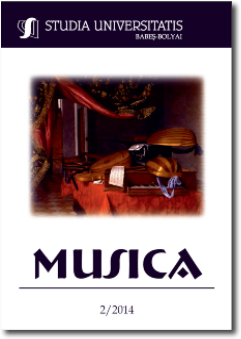THE RHYTHMICALLY, MELODICALLY AND RHYTHMIC-MELODICALLY ANALOGIES IN RICHARD WAGNER’S OPERAS
Keywords:
Richard Wagner, rhythmical, melodically, analogies, leitmotifAbstract
In Richard Wagner’s opera the composer put the rhythm both in the service of the musical dramaturgy and also in the melody, the harmony, the polyphony, the orchestration and the musical form. The rhythmic and the melodic analogies of his musical works do not have this trait because of the lack of ideas of the composer. These are rhythmical and melodic archetypes, which are called ancient motifs. This paper presents, in an analytical taste, these motifs, illustrating their analogy through musical examples.
References
Coca, Gabriela, Richard Wagner című operájának formai koncepciója (The Formal Concept of Richard Wagner’s „Lohengrin” Opera), Ed. MediaMusica, Cluj-Napoca, 2006.
Lendvai, Ernő, Verdi és a 20, század. A Falstaff hangzás-dramaturgiája (Verdi and the 20th Century. The Sound-Dramaturgy of Falstaff), Ed. Akkord, Budapest, 1998.
Terényi, Ede, The Harmony of Modern Music, Ed. Grafycolor, Cluj-Napoca, 2006.
Wagner, Richard, Lohengrin, Libretto, in vol. Wagner, Richard, Olandezul zburător (The Flying Dutchman), in Rom. by St. O. Iosif, Ed. pt. Lit., Bucharest, w.y.
Downloads
Published
How to Cite
Issue
Section
License
Copyright (c) 2014 Studia Universitatis Babeș-Bolyai Musica

This work is licensed under a Creative Commons Attribution-NonCommercial-NoDerivatives 4.0 International License.



